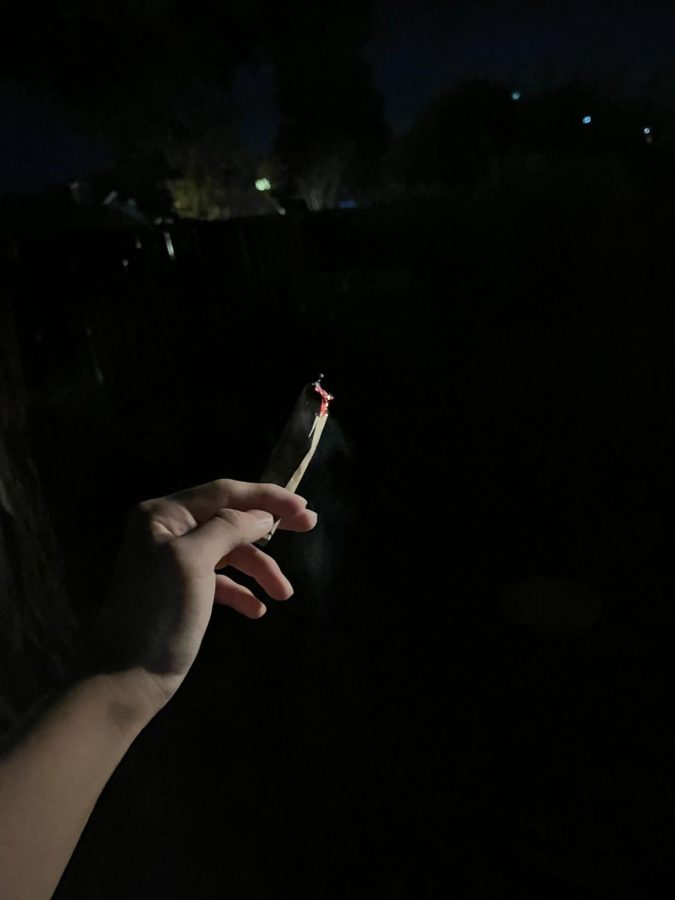
Alex Zhang
A person holds up a lit cigarette that has been partially smoked.
The two student sources in this story will remain anonymous because they discuss their participation in an illegal activity and will be referred to as Student A and Student B.
Cannabis, also known as marijuana or weed, is an addictive drug used for recreational and medicinal purposes. Although still federally illegal, medical cannabis has been legalized in 37 states, while recreational cannabis has been legalized in 21 states, including California in November of 2016. Cannabis encompasses a wide spectrum of uses, including treating chemotherapy symptoms, relieving pain and treating anxiety.
In 2021, California recorded over $5.2 billion dollars in sales, making it the single largest market for cannabis in the world. However, this industry is heavily regulated, including by California’s Health and Safety Code, which limits the quantity of cannabis a person can carry at a time to 28.5 grams and prevents minors from using it.
Despite these safety measures, cannabis usage remains a prevalent issue among young adults in high school and college. According to a study conducted by the National Institute on Drug Abuse, there was a 13.2% rise in cannabis usage in young adults from 2020 to 2021— an uptick that can be observed in the MVHS bathrooms where students often use cannabis, according to cannabis user Student B.
Student A, a frequent cannabis user, feels the drug is very accessible within our community through siblings, older friends or seeking out cannabis dealers. As a result of this accessibility, Student B says they have noticed people with red eyes and looking high in class.
Student A believes that another contributor to the strong presence of cannabis on campus is the range of effects the user can feel after smoking. They describe the experience as feeling “relaxed [and] more creative,” while Student B feels their “emotions are heightened, but then it clears [their] mind and [they] feel very tired.”
According to School-based therapist Richard Prinz, the increase in drug use among young adults comes from their need for distractions from life. Prinz refers to drug use as “a form of self-medicating.”
“I think people are looking for excitement if [they are] feeling anxious or depressed, or [they] have a mood [they] don’t like and [they] want to feel differently,” Prinz said. “Sometimes there is peer pressure. People feel like, ‘Oh, my friends are doing it, so I have to do it to be part of the group.’”
The MVHS community, though, is divided on whether this newfound access to cannabis is a much-needed tool for relaxation or a dangerous drug with serious ramifications on personal health.
